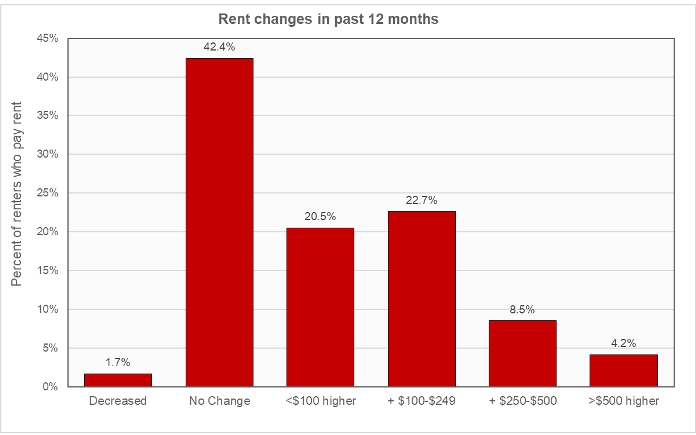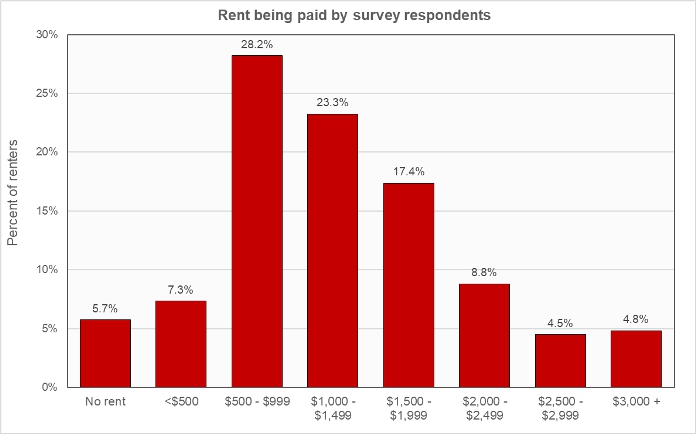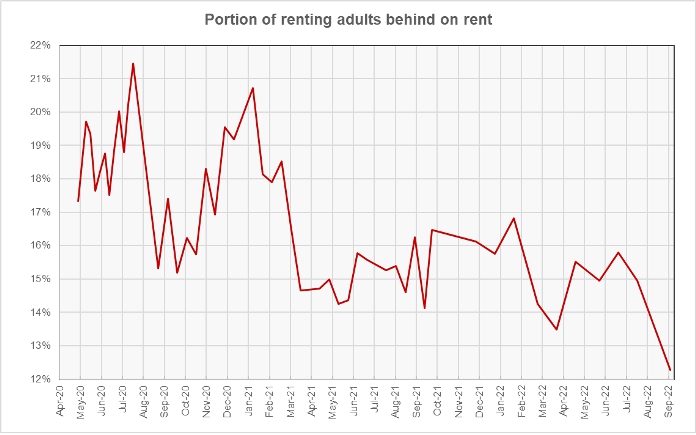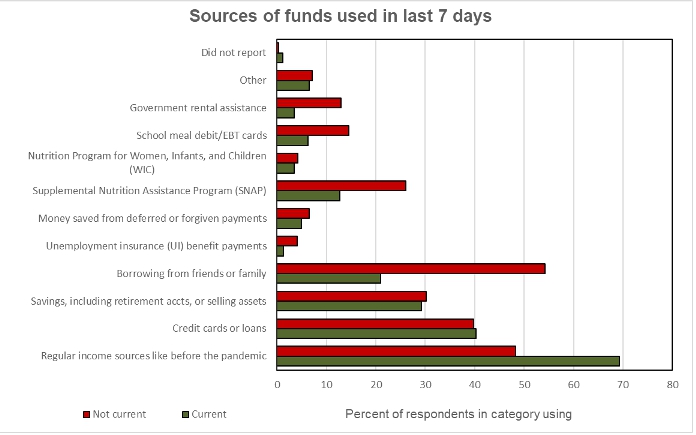The “Week 49” edition of the Census Bureau’s Pulse Survey shows that the portion of renters who are behind on their rent payments has fallen to a new survey low of 12.3 percent.
What is the Pulse Survey?
The Pulse Survey is an experimental program that the Census Bureau started shortly after economic shutdowns were imposed in response to COVID-19. It was designed to assess how the population of the country was faring under the economic stress caused by the reaction to the pandemic. The current survey, designated Week 49, is the first to be collected under what Census calls Phase 3.6 of the survey. With each new phase of the survey, Census modifies the set of questions being asked. For example, Phase 3.6 drops the questions about renters’ use of Federal emergency rental assistance programs.
The Week 49 survey collected data from September 14 to September 26. This is 7 weeks after the period in which the “Week 48” survey data was collected. The renter portion of the survey covers renters of both multifamily and of single-family properties.
Assessing rent growth
The survey asked participants whether they had experienced rent increases over the past 12 months. The results are given in the first chart, below, which shows the portion of renters answering this question for each of 6 possible levels of rent increases. Census tabulated rent growth in dollars rather than as a percentage of current rent as do other sources, so the results are not directly comparable to those reported elsewhere.

Perhaps surprisingly, by far the most frequent response was that the respondents had not had a rent increase in the last 12 months. When added to those who saw their rent decrease, they comprise 44.1 percent of respondents who pay rent. While many of the respondents reported experiencing relatively modest rent increases, these increases must be assessed in light of the rents being paid, which is the subject of the next chart.

The chart shows that 41.2 percent of renters pay less than $1,000 in rent, including those who do not pay rent. For them, even a seemingly modest rent increase of $100 is significant.
Tracking delinquencies
Renters in all phases of the survey have been asked whether they are behind on their rent. While some say that they occupy their housing without paying rent and some did not report whether they are current on their payments, the majority of respondents answered the question Yes or No. The next chart, below, shows the history of responses to this question. Note that the midpoint of the “Week 49” survey period was September 20, 122 weeks after the initial Pulse Survey.

While earlier surveys were usually conducted over a two-week period spanning the end of one month and the start of the next, the Week 49 survey took place mid-month. This may partly explain why the portion of renters who are behind on their rent was lower than in prior surveys; respondents had more time to make their rent payments. Whatever the reason, the portion of renters who said that they were behind on their rent was only 12.3 percent. This is below the previous survey low of 13.5 percent recorded in the Week 44 survey last April.
Profiling the participants
Of the respondents who reported being current on their rent, 34 percent said that they had children in the household. Of those reporting being behind on their rent, 51 percent reported having children in the household.
Of the respondents who reported being current on their rent, 15 percent said that they or a household member had experienced a loss of employment income over the prior 4 weeks. Of those reporting being behind on their rent, 36 percent reported that they or a household member had experienced a loss of employment income.
The final chart shows the sources of the funds survey respondents used to meet spending needs. Many of the differences between the people who are current on their rent and those who are behind are as one would expect: the former are more likely to rely on regular sources of income while the latter are more likely to rely on borrowing and on government assistance.














